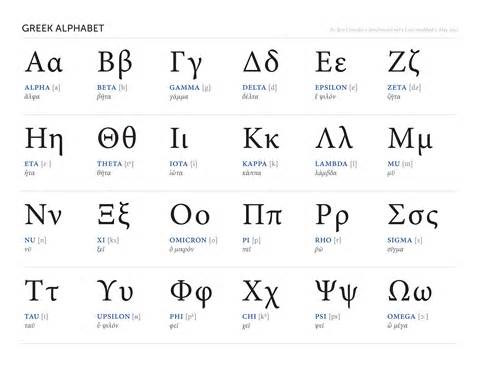Typical types of writing in human history
According to archaeologists, ancient texts appeared earliest in major civilizations such as Mesopotamia, Egypt, India, and China.
According to the World Civilization History book, around the fourth millennium BC, the Xume in Mesopotamia invented writing, consisting of two types of hieroglyphics and shaped letters.
The first types of texts
With words that refer to complex content, people combine hieroglyphs and symbols. For example, to refer to a cow, people draw a bull's head. They will add a leaf to the cow's head if they want to express the 'bison'.
However, this kind of hieroglyphics and idols cannot express all the words. Along with the type of expressive signatures, people also invented the harmonious word to express the sounds.
Ancient Mesopotamia created hundreds of badges to represent syllables and also letters to denote vowels. Although there are signs of syllables, they still use many symbolic symbolic combinations. Even a word has a syllable element and a figurative element.
The figure of the Mesopotamia, although used for a long time, eventually became a "dead word". It was not until the first half of the nineteenth century that a German scholar named Henry Rawlingson discovered how to read this word.

Greek alphabet.
From 5,000 years ago, created hieroglyphs by using simple drawings to express words. To show the Sun, people draw a circle and add a dot in the middle. The rectangle is divided into many cells to describe the field, three waves to indicate water .
This pictorial method is not capable of expressing words with complex and highly abstract content. In order to overcome, the Egyptians combined the method of figurative and symbolic methods. For example, to describe the buffalo, people painted buffalo heads, ostrich birds (with the same long hair) to show fairness.
During this period, the Egyptians knew how to use leather, cloth and Papyrus paper to write letters. This is a reed-like plant, growing very much on the banks of the Nile. In addition, ancient Egyptian texts were engraved on stone faces.
Egyptian hieroglyphs are difficult to read and remember. After Egypt died, no one could read this script. By 1822, a French scholar named Champollion found a way to decipher ancient texts left by the Egyptians.
Along with great civilizations such as Egypt, Luohe, India, Chinese people also soon created their own writing around the third millennium BC. The Thuong - An period appears with the word Armor, written on the turtle and animal bones. So far, archaeologists have discovered 5,000 of these armor words.
In the West Chu period, writing became more and more simplified. The Qin Dynasty used to use bamboo cards to write books. In the Han Dynasty, writing was basically completed. Chinese people also invented writing.

Writing on Papyrus paper of Egypt.
The birth of the first alphabet
The birth of hieroglyphs in Egypt, Mesopotamia or ancient China was a great civilization achievement. However, it requires a lot of symbols to symbolize each word so writing is very complicated, very few people can do it.
In the second millennium BC, the Semitic group used part of the Egyptian hieroglyphs to express the sound of their voices. This type of primitive writing appeared in this Sinai region is often considered the first systematic script. In particular, separate symbols symbolize single consonants, no symbols for vowels.

Ancient Chinese characters.
This consonant alphabet is also called Abjad (Arabic alphabet), written from right to left and spread by street merchants of Phenicia (now in Lebanon, Syria, and Israel). sea. It consists of 22 simple icons, normal merchants can also learn and write.
By about VIII-VII century BC, the Phoenician alphabet was transmitted to Greece. Here, it is refined and developed to record Greek. Some Phoenicia characters were retained, others were discarded. The most advanced progress is the use of letters to record vowels.
Many scholars believe that this supplement - which helped us to read and pronounce the words correctly - marked the birth of the first 'real' alphabet.
Greek was originally written from right to left, but was eventually transformed into alternating lines from right to left and left to right. By the V century BC, the writing direction was fixed in the direction from left to right so far.
The alphabet of the Greeks produced many other alphabets. The ancient Romans received the Greek alphabet and included some modifications.
Since then, the Latin alphabet was born and widely used by people of Western Europe. Then the letters in the English alphabet are based on the Roman alphabet.
- The relationship between literacy and the brain
- History of the pen
- Hand writing helps remember better
- Nine types of helicopters entered history
- Details of the three most dynamic stories of human history
- Human genome sheds light on the mystery of human history
- The oldest detection of human DNA can rewrite human evolutionary history
- Lice 'write' human history
- Robot will write a novel
- The 40 most talented geniuses in human history (Part 3)
- Written words reveal people's personality and health
- The most typical face on the planet
 'Fine laughs' - Scary and painful torture in ancient times
'Fine laughs' - Scary and painful torture in ancient times The sequence of numbers 142857 of the Egyptian pyramids is known as the strangest number in the world - Why?
The sequence of numbers 142857 of the Egyptian pyramids is known as the strangest number in the world - Why? History of the iron
History of the iron What is alum?
What is alum?